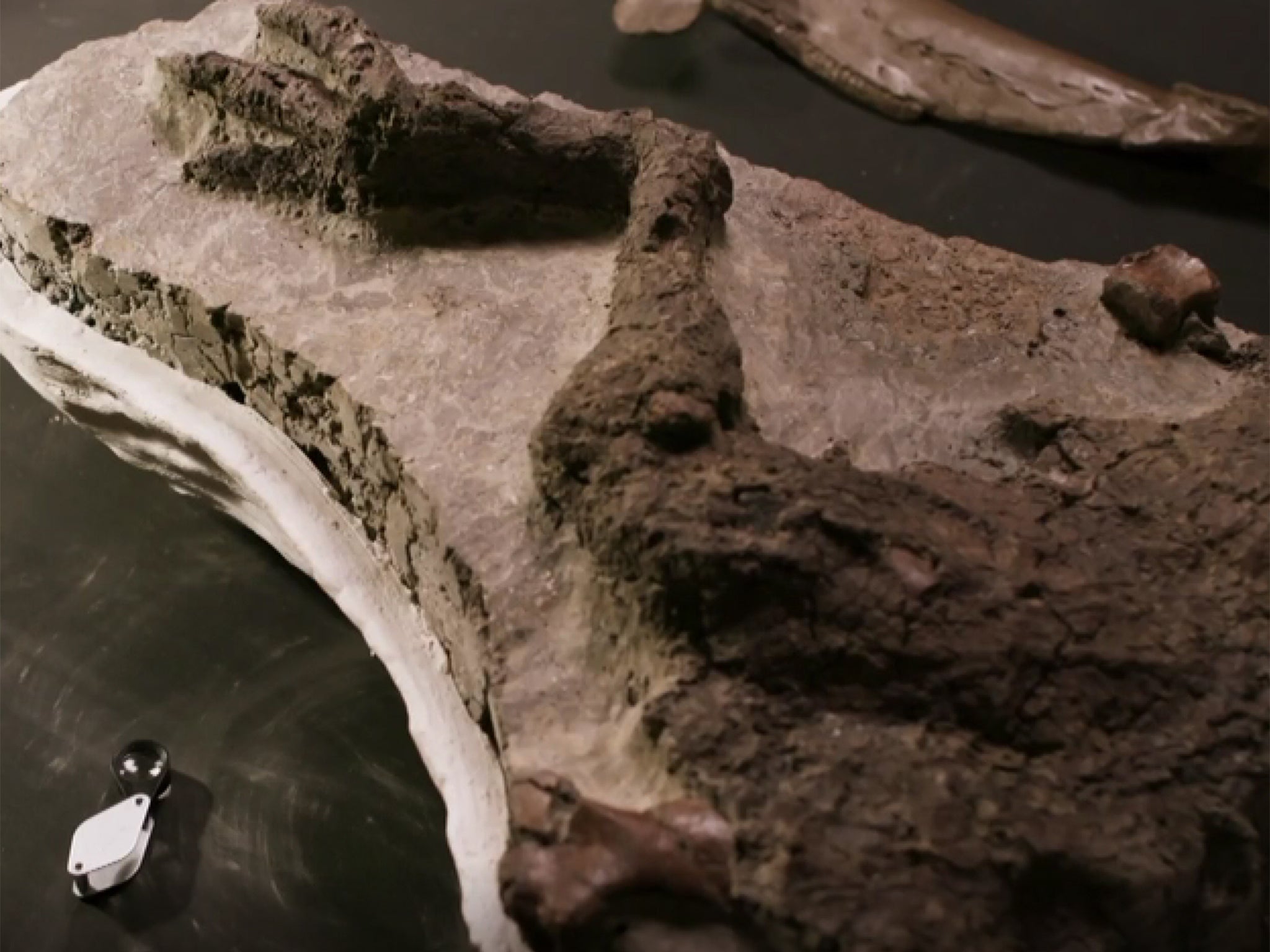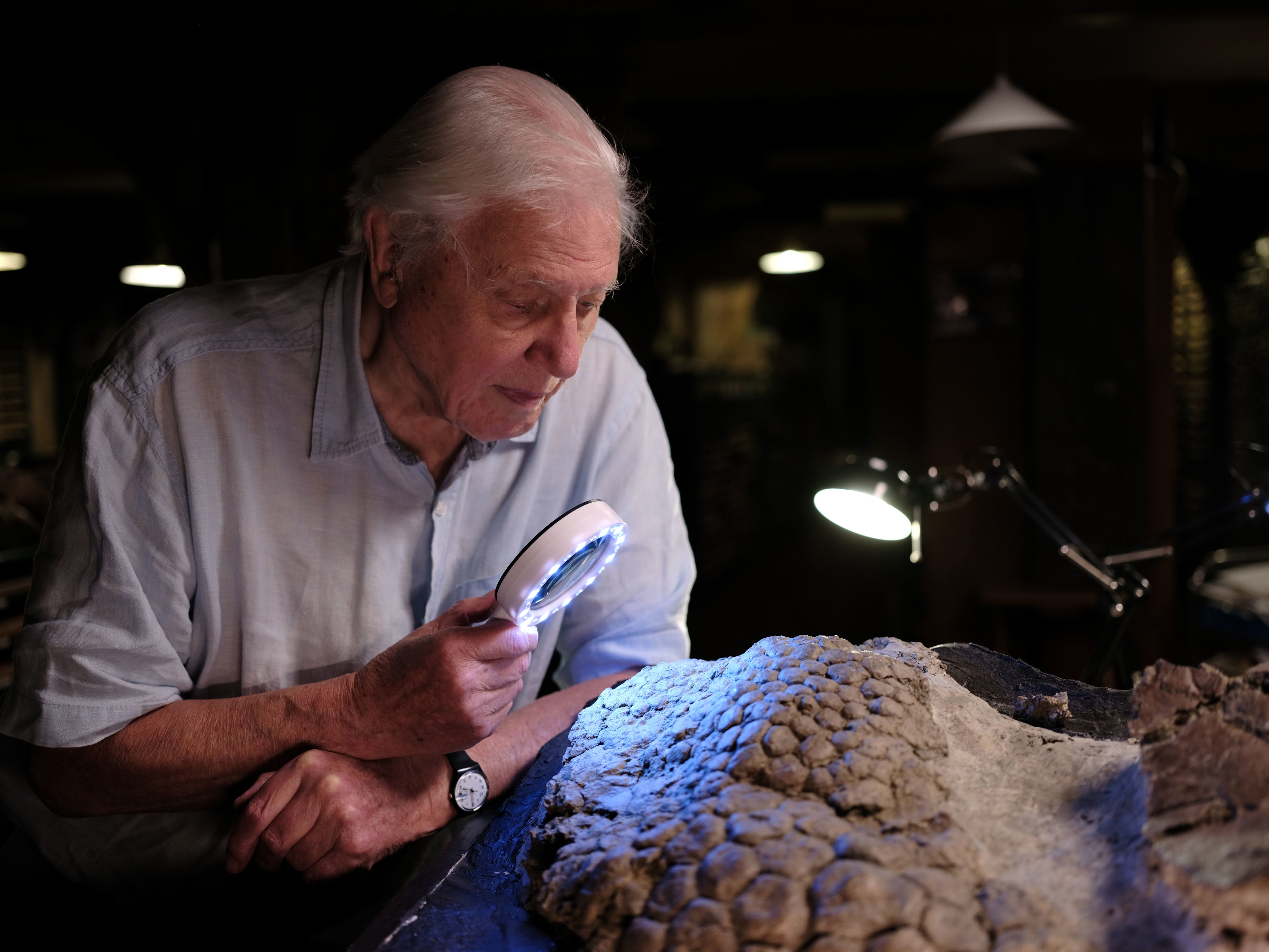Scientists ‘find fossil of dinosaur that died on day of asteroid strike’
Discovery of fossilised leg may finally prove that asteroid wiped out dinosaurs on Earth

Your support helps us to tell the story
From reproductive rights to climate change to Big Tech, The Independent is on the ground when the story is developing. Whether it's investigating the financials of Elon Musk's pro-Trump PAC or producing our latest documentary, 'The A Word', which shines a light on the American women fighting for reproductive rights, we know how important it is to parse out the facts from the messaging.
At such a critical moment in US history, we need reporters on the ground. Your donation allows us to keep sending journalists to speak to both sides of the story.
The Independent is trusted by Americans across the entire political spectrum. And unlike many other quality news outlets, we choose not to lock Americans out of our reporting and analysis with paywalls. We believe quality journalism should be available to everyone, paid for by those who can afford it.
Your support makes all the difference.A fossil has been discovered that scientists believe belongs to a dinosaur killed on the day of an asteroid strike 66 million years ago.
Dinosaurs are thought to have been wiped out by the asteroid and researchers hope the discovery of the fossil, as well as an asteroid fragment, may just prove that.
The find was reported by the BBC after their cameras and Sir David Attenborough were given exclusive access to the Tanis site in North Dakota for an upcoming documentary.

They witnessed the moment paleontologists, who have been digging at the site for a decade, discovered a dinosaur leg belonging to a thescelosaurus, a small herbivore.
“Never before has a dinosaur victim of the asteroid strike been found,” the broadcaster reported.
Robert DePalma, a University of Manchester graduate who led the Tanis dig, said: “Just to have a dinosaur at that site that preserves the first hours after impact is such a goose-bumping feeling because that animal probably witnessed the end of the Crustaceous.
“How much better can you get than that?”
The Chicxulub asteroid, which was approximately the size of Mount Everest, hit the Gulf of Mexico.
The impact of the asteroid caused tremors which resulted in tsunamis and flash floods that swept many creatures and plants across thousands of kilometres.
Along with the fossilised leg, the team also discovered fish that breathed in impact debris as it rained down from the sky.

The BBC has spent three years filming the Tanis dig for the documentary, which will air next week and will be narrated by Sir David.
“We’ve got so many details with this site that tell us what happened moment by moment, it’s almost like watching it play out in the movies,” Mr DePalma said.
“You look at the rock column, you look at the fossils there, and it brings you back to that day.”
The BBC said that the findings would have to be submitted for peer review before they were confirmed.
Dinosaurs: The Final Day with Sir David Attenborough will be broadcast on BBC One on 15 April at 6.30pm.


Join our commenting forum
Join thought-provoking conversations, follow other Independent readers and see their replies
Comments